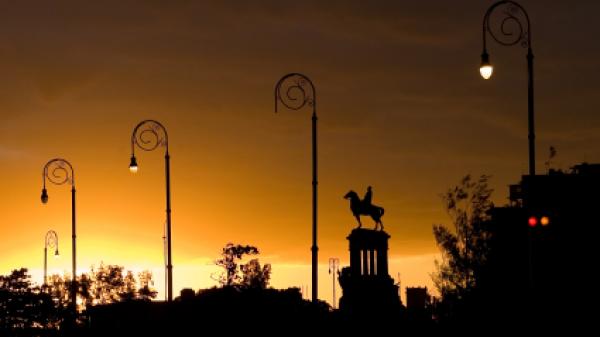Cuba Starts Daylight Saving Between March 7–8, 2009
Cuba will turn the clocks one hour forward when it starts observing daylight saving at midnight between Saturday, March 7, and Sunday, March 8, in 2009.

Cuba Starts DST March 7–8, 2009
©iStockphoto.com/Xavier Gallego
Daylight saving time is used in Cuba to save energy and to make better use of sunlight, according to Cuba’s Electric Union (cited in Radio Reloj).
Cuba is five hours behind Coordinated Universal Time (UTC), or UTC -5 hours during the non-daylight saving period. It will be on UTC -4 hours when it starts daylight saving time.
Energy Saving Measure
Cuba’s government hopes that the decision to adopt daylight saving time in the country would reduce use of artificial lighting, thus reducing electricity consumption. The extra hour of natural sunlight will save energy during peak hours, particularly when artificial light is used for cooking during meal times in homes.
Cuba’s Electric Union states that everything is done to achieve a more rational use of energy and believes that daylight saving time will benefit the country’s citizens.
History
Daylight saving time was first introduced in Cuba in 1928 but it was not widely accepted until World War II. After the war, daylight saving time was no longer observed until 1965. In 2004 Cuba remained on daylight saving time until October 29, 2006. Cuba was in a perpetual state of daylight saving time during that period. After two years operating all year-round without changing from “summer” to "normal" time, Cuba decided to re-establish standard time on October 29, 2006.
Cuba again observed daylight saving time in 2007 and 2008. It was announced on March 4, 2009, that Cuba would observe daylight saving time again in 2009, starting at midnight between March 7 and March 8. timeanddate.com will provide more information on the length of the 2009 daylight saving schedule as it comes on hand. Daylight saving time ended on the last Sunday of October from 2006 to 2008.
Regardless of Cuba’s daylight saving plans in the future, the Guantanamo Bay Naval Base observes daylight saving time in synchronization with its Florida headquarters in the United States.
Dates of Daylight Saving Time 1980–2009
These are the dates Daylight Saving Time started and ended in Havana.
| Year | Start date | End date | Daylight duration |
|---|---|---|---|
| 1970 | Apr 26 | Oct 25 | 26 weeks |
| 1971 | Apr 25 | Oct 31 | 27 weeks |
| 1972 | Apr 30 | Oct 8 | 23 weeks |
| 1973 | Apr 29 | Oct 8 | 23 weeks and 1 day |
| 1974 | Apr 28 | Oct 8 | 23 weeks and 2 days |
| 1975 | Apr 27 | Oct 26 | 26 weeks |
| 1976 | Apr 25 | Oct 31 | 27 weeks |
| 1977 | Apr 24 | Oct 30 | 27 weeks |
| 1978 | May 7 | Oct 8 | 22 weeks |
| 1979 | Mar 18 | Oct 14 | 30 weeks |
| 1980 | Mar 16 | Oct 12 | 30 weeks |
| 1981 | May 10 | Oct 11 | 22 weeks |
| 1982 | May 9 | Oct 10 | 22 weeks |
| 1983 | May 8 | Oct 9 | 22 weeks |
| 1984 | May 6 | Oct 14 | 23 weeks |
| 1985 | May 5 | Oct 13 | 23 weeks |
| 1986 | Mar 16 | Oct 12 | 30 weeks |
| 1987 | Mar 15 | Oct 11 | 30 weeks |
| 1988 | Mar 20 | Oct 9 | 29 weeks |
| 1989 | Mar 19 | Oct 8 | 29 weeks |
| 1990 | Apr 1 | Oct 14 | 28 weeks |
| 1991 | Apr 7 | Oct 13 | 27 weeks |
| 1992 | Apr 5 | Oct 11 | 27 weeks |
| 1993 | Apr 4 | Oct 10 | 27 weeks |
| 1994 | Apr 3 | Oct 9 | 27 weeks |
| 1995 | Apr 2 | Oct 8 | 27 weeks |
| 1996 | Apr 7 | Oct 6 | 26 weeks |
| 1997 | Apr 6 | Oct 12 | 27 weeks |
| 1998 | Mar 29 | Oct 25 | 30 weeks |
| 1999 | Mar 28 | Oct 31 | 31 weeks |
| 2000 | Apr 2 | Oct 29 | 30 weeks |
| 2001 | Apr 1 | Oct 28 | 30 weeks |
| 2002 | Apr 7 | Oct 27 | 29 weeks |
| 2003 | Apr 6 | Oct 26 | 29 weeks |
| 2004–2006 | Sunday, March 28, 2004 | Sunday, October 29, 2006 | 135 weeks |
| 2007 | Mar 11 | Oct 28 | 33 weeks |
| 2008 | Mar 16 | Oct 26 | 32 weeks |
| 2009 | Mar 8 | Oct 25 | 33 weeks |
| 2010 | Mar 14 | Oct 31 | 33 weeks |
| 2011 | Mar 20 | Nov 13 | 34 weeks |
| 2012 | Apr 1 | Nov 4 | 31 weeks |
| 2013 | Mar 10 | Nov 3 | 34 weeks |
| 2014 | Mar 9 | Nov 2 | 34 weeks |
| 2015 | Mar 8 | Nov 1 | 34 weeks |